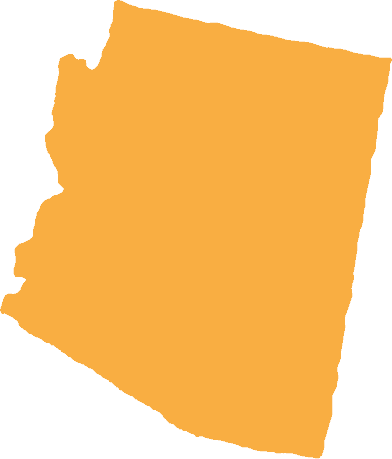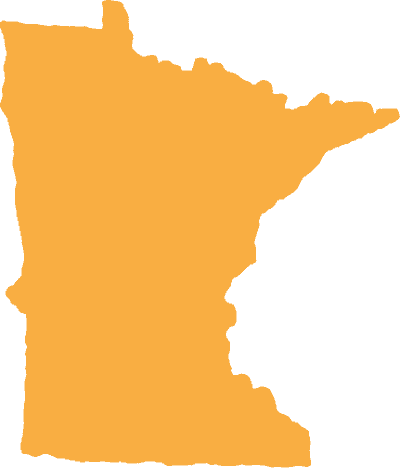Our States
Home » Our States
In 2022, the Powering a New Economy Fund will focus on four states that are ripe for swift policy action that will improve economic conditions for a large number of households. In each of these states, the New American Majority has strong potential to lead this charge.

Arizona
Arizona is one of the fastest growing states in the country, largely driven by growth among communities of color. The majority of Arizona’s population –81 percent– is concentrated in three counties: Maricopa, Pima, and Pinal. These counties have a mix of urban, suburban and rural areas. While some parts of Arizona’s economy are currently doing well, many Arizonans are left behind. Arizona is the 15th poorest state in the country, and people of color experience poverty at higher rates – Black and Latinx communities experience poverty at twice the rate of white people, and nearly four times the rate of Native Americans. More than one in four people of color in Arizona live in poverty. Public policies have deprived families of resources and assistance they need to get ahead, and many of these barriers can be traced back to Arizona’s history of discriminatory and racist policies. Increased civic participation among these communities of color drives much of the changing political landscape in the state. The majority of grassroots organizations in Arizona are based in and around Phoenix, however there is a growing commitment to create statewide organizations and capacity that reach beyond Phoenix and into areas like Tucson, Flagstaff, and key towns across the state. The expansion, and the resources to expand, are critical for Arizona organizations to have success around governance and to implement significant policy changes to improve health care, jobs, education, immigration, and other key issues.
Grantees
Louisiana
Louisiana has the second highest percentage of African-Americans in the country, and a growing Latinx population, including the third highest Honduran American community in the country located in the New Orleans metro area. People of color are now nearly 40 percent of Louisiana’s total population. The state has an emerging network of community, faith, and constituent-based organizations. Rooted in the deep South, Louisiana’s progressive infrastructure has suffered from lack of investment and resources. Most of the infrastructure was built after Hurricane Katrina to accommodate the overwhelming needs facing the state. For the first time in years, Louisiana saw a budget surplus in February 2020, and things were starting to normalize for the first time since Hurricane Katrina, but then the pandemic hit. With the economy driven by tourism and the energy sector, just six months later, Louisiana finds itself in a budget deficit again. For example, state leaders estimate that it will take three years for the hospitality industry to recover in New Orleans; there are no jobs and unemployment is the only thing keeping people afloat right now. Meanwhile, Louisiana has $37 million left in the Road Home program, and federal community development block grant earmarked for Hurricane Katrina related recovery. State advocates are prioritizing the pressing needs that Louisianans are facing today – such as food insecurity and housing brought on by the pandemic. Without the ability to raise state revenue, leaders believe that the federal government is the only engine of recovery for the state. Drawing on lessons learned from the past, state leaders developed a “roadmap to recovery” that includes policy solutions to address the COVID-19 crisis. From investing in workers, particularly low-wage, frontline workers to increased investments in childcare and health care, equitable education access, food and housing security, and strengthening the social safety net. If successful, these pandemic related policies provide the foundation for long-term reforms.
Grantees


Michigan
Michigan has a diverse set of community, faith, and constituency-based organizations that have emerged in the past several years. Michigan’s organizing infrastructure is defined by a predominance of leaders of color, the relative youth of organizations, the massive expansion of the organizations in 2020, and the concentration of those organizations in southeast Michigan. For the Midwest, it is unusual to have this many strong and new community organizations led by people of color. This is a particular strength for Michigan, which has the largest percentage of people of color of any Midwestern state and creates an opportunity to advance multiple strategies across a broad set of groups.
Grantees
Minnesota
Minnesota is characterized by three demographic trends: rapid growth of communities of color across the state, particularly in Minneapolis–St. Paul; an urban-rural divide with rural communities falling behind in almost every socioeconomic indicator; and a rapidly aging, predominantly white population. Communities of color are growing faster in Minnesota than in all but six other states, led by an influx of Latinx immigrants but also significant Asian Americans and Pacific Islanders and African-American population growth. In 2017, communities of color are approximately 19 percent of the overall population but are expected to be 30 percent of the state’s population by 2040. Despite demographic change concentrated in urban areas, the majority of residents in Minnesota will continue to be white – and here lies a challenge/opportunity that directly relates to the state’s future. Minnesota has been regarded as a national model for state alignment and strategies for long term, community-based power building.
Grantees


